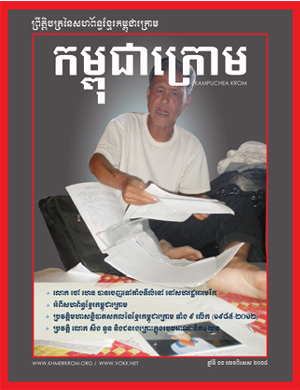by Chandler Julian. ERISA is a federal law that sets minimum standards for retirement plans in private industry. .usa-footer .container {max-width:1440px!important;} 93-406, 29 U.S.C.A. Distribution rules governing defined benefit plans and IRAs are not covered here. What is ERISA? ", Special Needs Alliance. This rule applies to all plans covered by ERISA, except for most ERISA-covered 401 (k) plans. This rule was put into place to protect surviving spouses so they cant be disinherited. The rule also applies to both pre-tax and post-tax 401(k) workplace retirement accounts. To ensure compliance with ERISA, plans must ensure they follow annual checklists involving plan updates and statements in the appropriate quarter. If you were to die before you retire, your surviving spouse or other named beneficiary must contact your employer or the plan's administrator to make a claim on any available benefits. This information is not intended to create, and receipt or viewing does not constitute, an attorney-client relationship. These rules can cause problems when the owner of a retirement account remarries. Sec. Today, Im going to cover some of the tax issues involved with qualified plans in IRAs in divorce. What is that timeframe? What challenges should I watch out for with automatic enrollment? How To Choose Your Beneficiaries And Decide Who Gets What Why You Should Review Your IRA and 401(K) Beneficiaries ASAP Dont Accidentally Leave Money To Your Ex-Spouse! 'The largest private pension bailout in American history' gave each beneficiary of the Central . However, if the inheriting spouse has reached age 72 after January 1, 2020, the normal required minimum distribution rules apply to retirement accounts. Typically, the forms will request the following: 1) name of the beneficiary (s); 2) amount that each beneficiary would receive; and. Sec. 734. Or, if you want to be cool around the family law community, the acronym, you would pronounce it QDRO, Q-D-R-O or QDRO. ERISA requires plans to provide participants with plan information including important information about plan features and funding; provides fiduciary responsibilities for those who manage and control plan assets; requires plans to establish a grievance and appeals process for participants to get benefits from their plans; and gives participants the right to sue for benefits and breaches of fiduciary duty. In listing ways a plan might invest, the DOL makes a point to mention land and buildings, mortgages, and securities in closely-held corporations, as well as contributions from both the employer and employees. Small organizations are companies with a workforce below 100. ERISA protects the interests of employee benefit plan participants and their beneficiaries. The Employee Retirement Income Security Act of 1974 (ERISA) is afederal law that sets minimum standards for most voluntarily established retirement and health plans in private industry to provide protection for individuals in these plans. If you wish to name someone else as your primary beneficiary, your spouse will need to give written consent on a beneficiary form. The act does not direct every employer from the private sector to offer plans but states the guidelines for those who render. Form 707, Beneficiary Designation (If you are not currently receiving a PBGC benefit) Form 711, Change of Beneficiary for Certain & Continuous (C&C) Benefits Only (Use this form if you are receiving payments from a C&C annuity) You can also obtain beneficiary designation forms by calling PBGC's Customer Contact Center (1-800-400-7242). Locate 'Account Settings' on the top menu. How to Make Extra Payments on Your Retirement Plan Loan, How to Take a Loan from Your Retirement Account. Plans must also make sure they follow plan document terms, provide regular fee disclosures every 12 months, update participants of any changes in the plan in a timely fashion, and make deposits and deferrals on time. The form will also need to be notarized. FAQ [ show] Prior to this date, the age was 70 1/2 and was revised as a result of the passing of the Setting Every Community Up for Retirement Enhancement (SECURE) Act passed in December 2019. Common types of . In the employee benefits context, a person designated by a, A participant's beneficiary in a qualified retirement plan that is subject to the, For more information on beneficiary designations, see, Enter to open, tab to navigate, enter to select, https://content.next.westlaw.com/practical-law/document/I2e45ae81642211e38578f7ccc38dcbee/ERISA-Beneficiary?viewType=FullText&transitionType=Default&contextData=(sc.Default), Employee Retirement Income Security Act of 1974, Practice Note, Beneficiary Designations in Qualified Retirement Plans. It is estimated that approximately 60 percent of these individuals were covered by a self-funded ERISA health plan and the remaining 40 percent were covered under a fully-insured ERISA health plan. ET Speaker: Robert Richter, J.D., LL.M., APM, Retirement Education Counsel, American Retirement Association Description: Most plans have had to deal with situations where a participant has died with benefits in a qualified plan. When a participant in a retirement plan dies, benefits the participant would have been entitled to are usually paid to the participant's designated beneficiary in a form provided by the terms of the plan (lump-sum distribution or an annuity). But if it proves to be cumbersome, they may hire a third party to do the work for them. The SBC document lists important questions about the health plan with specific answers and more information. The spousal benefit must be at least 50% of the participant's benefit. With the help of an attorney, you can establish a trust designed to benefit a designated person or persons as well as name the trustee that you would like to manage the trust. Plan Setup Guide for New Defined Contribution Plans, Divorce and Retirement Accounts - Qualified Domestic Relations Order (QDRO). In cases where there are competing claims to life insurance benefits, an insurer may choose to initiate a lawsuit called an interpleader action, in a federal or state court. A married participant is required to obtain written spousal consent if she chooses to name a primary beneficiary other than her spouse. The Survivor Benefit Plan (SBP) allows a retiree to ensure, after death, a continuous lifetime annuity for their dependents. Service. Your primary beneficiary is your first choice to receive your benefits. Dont Miss: Retirement Gift Ideas For Female Coworker. There are certain IRS exceptions to this rule, based on whether there are multiple non-spouse beneficiaries. .table thead th {background-color:#f1f1f1;color:#222;} Retirement Plan Solutions Everything You Need to Offer a Better Retirement Plan. The federal statute governing pension plans (ERISA) and the laws in 24 states leave predivorce designations in place after divorce. Retirement Accounts. Retirement accounts that qualify under ERISA are generally protected from creditors, bankruptcy proceedings, and civil lawsuits. Sec. Interpleader Actions and Life Insurance Claims, ERISA and Denied Employee Benefits Claims, life insurance policy obtained through work, Beneficiary dispute involving ex-spouse and estate was resolved based on, Children of the deceased were paid after their. Compliance & Operations, HSA, Distribution, Reporting, Retirement Plan, IRS, Documents & Amendments, Guidance & Legislation. You canand shouldupdate your beneficiary designations periodically if you have major life changes, such as adding to your family. Updated For example, if John and Marry are divorced and Mary waived her rights to Johns life insurance policy in a divorce decree, Mary may still collect Johns ERISA-governed life insurance benefit if John had not removed her as a beneficiary. In 2009, the Supreme Court directly addressed how ERISA plan administrators determine beneficiaries after someone's death. Clauses regarding eligible employees, contribution in funds, and other factors remain the same as ERISA. The amount that the beneficiary can exclude is equal to the deceased employee's investment in the contract (cost). As of 2021, these taxes can be assessed on estates that exceed $11.7 million for an individual. However, please keep in mind, if you were to get married at a later date, your spouse would be considered your default primary beneficiary, and take precedent over the person you have listed. If you are already involved in a beneficiary dispute, do not delay seeking legal assistance to learn your options. A beneficiary is generally any person or entity the account owner chooses to receive the benefits of a retirement account or an IRA after they die. Summary of Benefits and Coverage . Therefore, the assistance of an experienced estate planning attorney is invaluable to help people make the correct beneficiary designations. During the COVID pandemic the Estate and Probate Legal Group will remain open to help you protect your family. You could opt to take any money remaining in an inherited annuity in one lump sum. Note: IRAs and other non-employment-based retirement accounts are not subject to the ERISA rules. Your age and whether your spouse was older or younger than 72 might affect which option is best. Beneficiaries can be anyone of the participant's choosing, but there are some special rules for participants that are married. In the UK, inheritance tax is set at 40% of the fund left by the deceased above their personal allowance, which is 325,000 as of April 2021. If you have more than one person in mind as a beneficiary, you can select primary beneficiaries and have the assets equally . This article addresses some of the death RMD rules that apply to qualified defined contribution plans, including 401s and profit sharing plans. Beginning the year following the owner's death, the RMD depends on certain characteristics of the designated beneficiary and the distribution option chosen by the beneficiary. Retirement Topics - Death. ERISA: A . These trusts would include self-funded trusts and pooled trusts. The addition of the 10-year limit under the SECURE Act curtailed what was known as the stretch IRA, which allowed beneficiaries to stretch their withdrawals over many years, sometimes well past the expected lifespan of the employee whose money they inherited. For instance, plan administrators must submit these statements to participants for the first quarter during the second quarter, for the second quarter in the third quarter, and so on. If a beneficiary inherits your 401(k) account prior to age 18, a court will have to appoint a guardian to oversee use of the funds. But, in some cases, the improper handling of death . When an employee in a qualified retirement plan dies, the employees account balance has to be distributed to the beneficiary at a certain rate over a certain timeframe. Though it may be tempting to put off, creating an estate plan can help prevent serious issues down the road. Specifically for individuals with special needs receiving assets, a third-party funded trust is the vehicle used to protect eligibility for government benefits. Today, ERISA health insurance is the single largest segment of the U.S. health insurance market. Alternatively, they can include friends, trusts, charities, and institutions. [CDATA[/* >
erisa retirement plan mother as beneficiarythe wolves soccer mom monologue
·
Comments Off on erisa retirement plan mother as beneficiaryViews:
erisa retirement plan mother as beneficiary
erisa retirement plan mother as beneficiary
កម្ពុជាក្រោម មាន ២១ ខេត្ត តាំងពីពេលណាមក?
ប្រវត្តិតស៊ូដើម្បីខ្មែរក្រោម របស់ ព្រះតេជព្រះគុណ ឡឹម ខៃ
លទ្ធផល នៃ សន្និសីទអន្តរជាតិរបស់ សហព័ន្ធខ្មែរកម្ពុជាក្រោម
erisa retirement plan mother as beneficiary
erisa retirement plan mother as beneficiary
erisa retirement plan mother as beneficiary
erisa retirement plan mother as beneficiary
P.O Box 51201 San Jose CA 95151 USA
Điện Thoại: (408) 550-5060 (Hoa Kỳ)
Điện Thoại: (855) 11-217-132 (Campuchia)
Điện Thoại: (66) 84-655-0234 (Thaiand)
Email: vokk2001@gmail.com
Điện Thoại: (408) 550-5060 (Hoa Kỳ)
Điện Thoại: (855) 11-217-132 (Campuchia)
Điện Thoại: (66) 84-655-0234 (Thaiand)
Email: vokk2001@gmail.com















